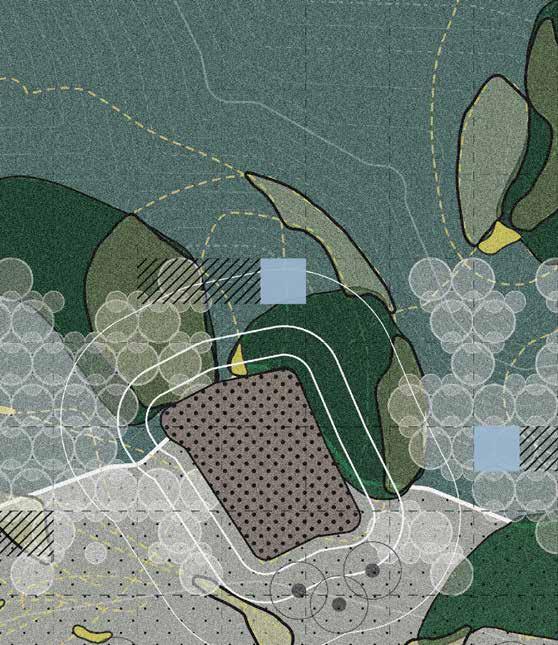
5 minute read
PERFORMATIVE INTERFACE
from PHYGITAL BIOSPHERES
by Zain Ansari
DESIGN INVESTIGATIONS
CLIMATE CHANGE AND DESERTS
Advertisement
Desert ecosystems are predicted to be one of the most vulnerable to global climate change (Bombi et al., 2021). Rising temperature, decreasing rainfall, and increasing atmospheric CO ₂, is expected to strongly affect the structure and function of desert ecosystems (Bombi et al., 2021)
Saudi Arabia is susceptible to the impacts of climate change that pose increasing risk to its water security, such as the decrease in frequency and amount of precipitation and increase in temperature. (Portal, no date)
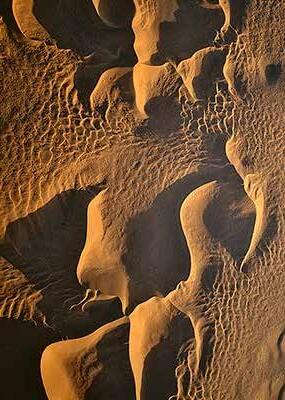
Xeric inhabitants are exposed to extreme differences in ambient temperatures, such as severe hot days and cold nights, where the survival of natural ecosystems is directly controlled by water availability (Schwimmer and Haim, 2009). That makes temperature and precipitation one of the key stressors in xeric urban environments.
So how can we use advanced computation and fabrication technologies to understand the past and predict a culturally and environmentally responsive built environment for the future?
Addressing this question has been a primary objective of the research presented in the almanac. This section presents critical investigations conducted over the last two years to understand and explore various aspects of arid environments as design parameters.
Arrakis is a Y1 project that explores bio-integrated design strategies to harvest atmospheric water in arid conditions, from exploring the fringes of Jeddah to understanding arid terrains, plant growth and survival mechanisms and harvesting water from hot desert air through meshes. The system can be used to create pods in desert landscapes. The water absorption and retaining capabilities of the Arrakis 1 walls can help create micro-ecologies in arid regions. Studying plants such as Calotropis Procera and Abutilon Palmeri to understand various bio-mechanisms that make these plants highly resilient in extremely arid conditions. Trichomes are hair-like structures that support the absorption and retention of water and other minerals required by the plant. These structures form a protective coat on the leaves’ outer surface to help prevent water loss in highly arid conditions.
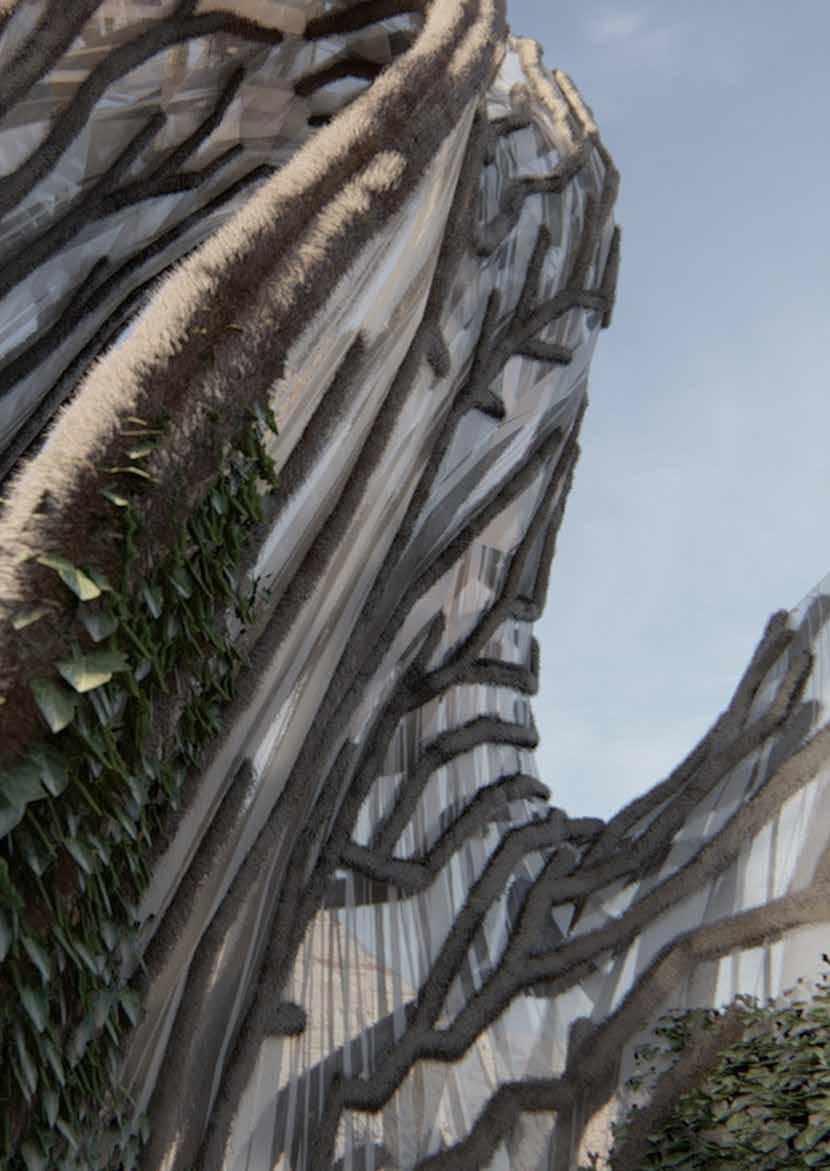
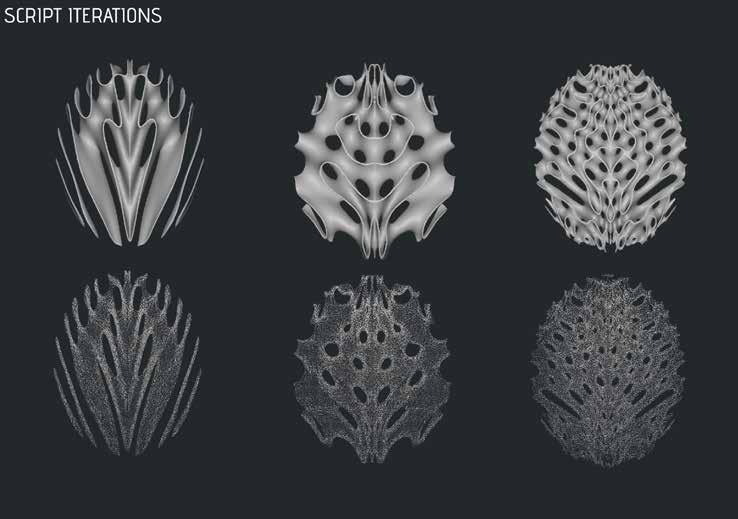

SINGLE MODULE
STREAM REPITITION
DOME REPETITION
CONTAINER REPETITION

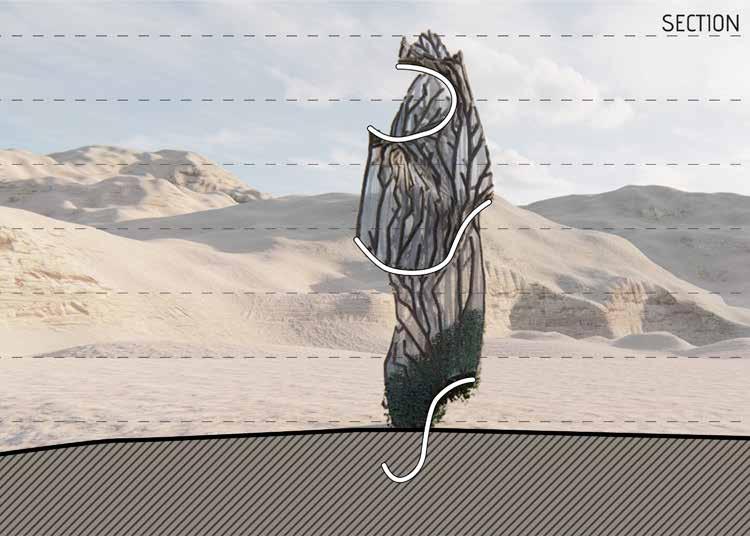

The system can be used to create pods in desert landscapes. The water absorption and retaining capabilities if the Arrakis 1 walls can help in creating micro-ecologies in arid regions.
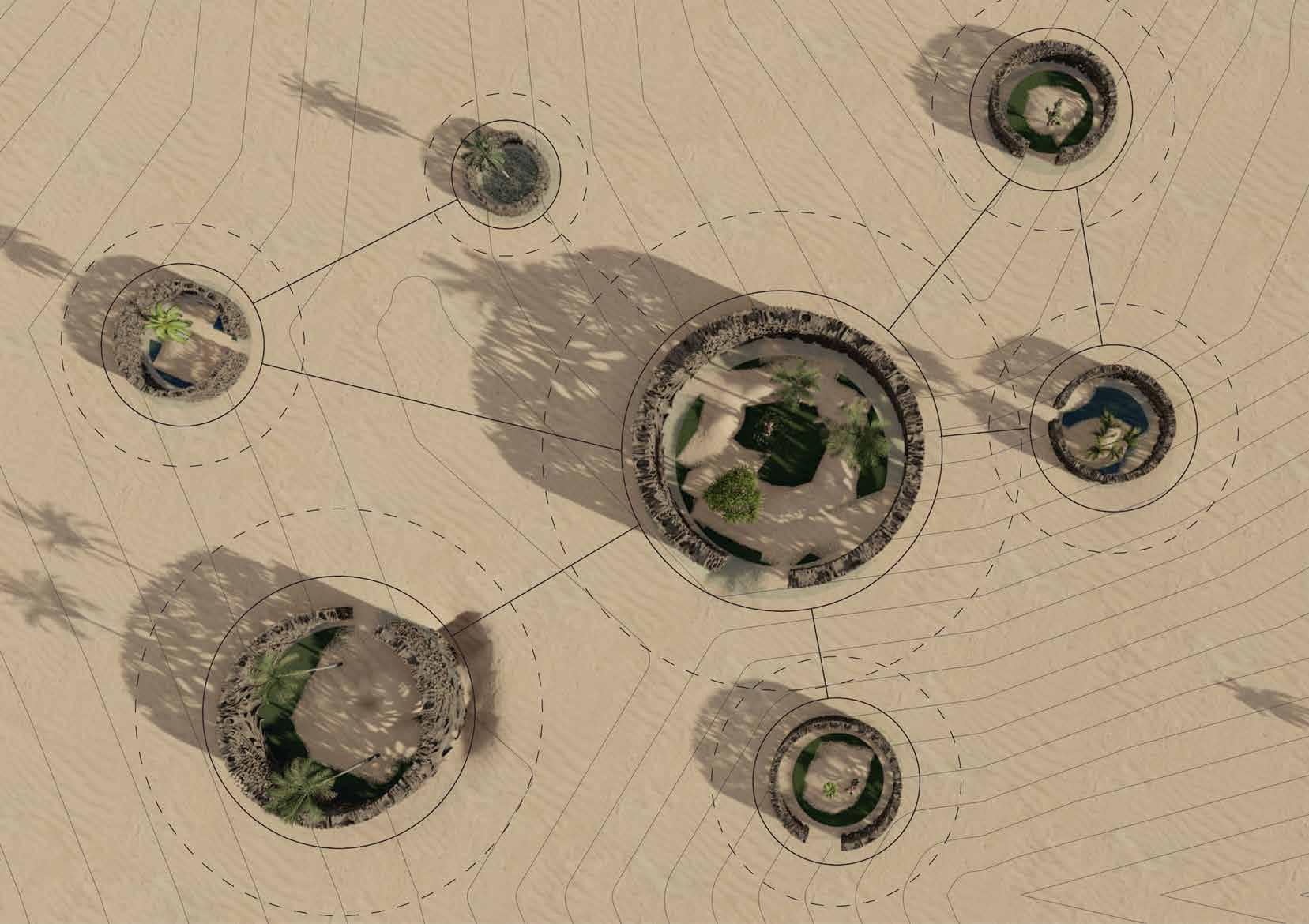
The system can be used to create pods in desert landscapes. The water absorption and retaining capabilities of the Arrakis 1 walls can help create micro-ecologies in arid regions.
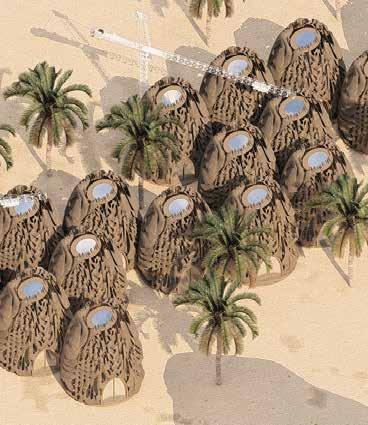
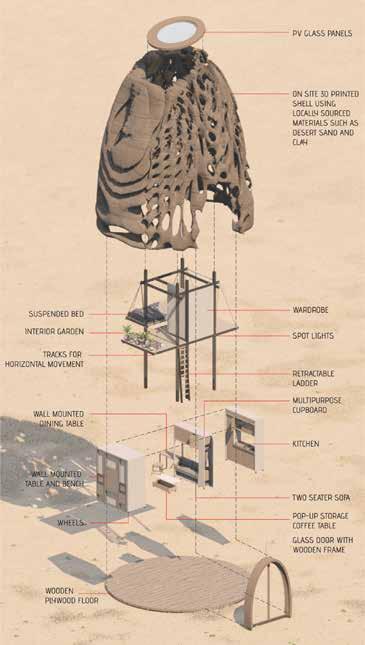

3.11
Hydra is a Y1 project in collaboration with Will Scott and Shenghan Chen. As climate change takes its course, numerous threats are speculated to reshape the existing environment and ecosystems. One of the challenges the tropical cities and villages faces is the increasing frequency of annual floods and droughts. This shift is causing water shortages and loss of agriculture in such regions, leading to mass migrations in the coming years. Hydra is a proposal for a stormwater management system that aims to act as a water barrier during flood season and harvest atmospheric moisture during drought season. The project aims to explore an architectural script that can potentially channel and interact with water in extreme environmental settings.
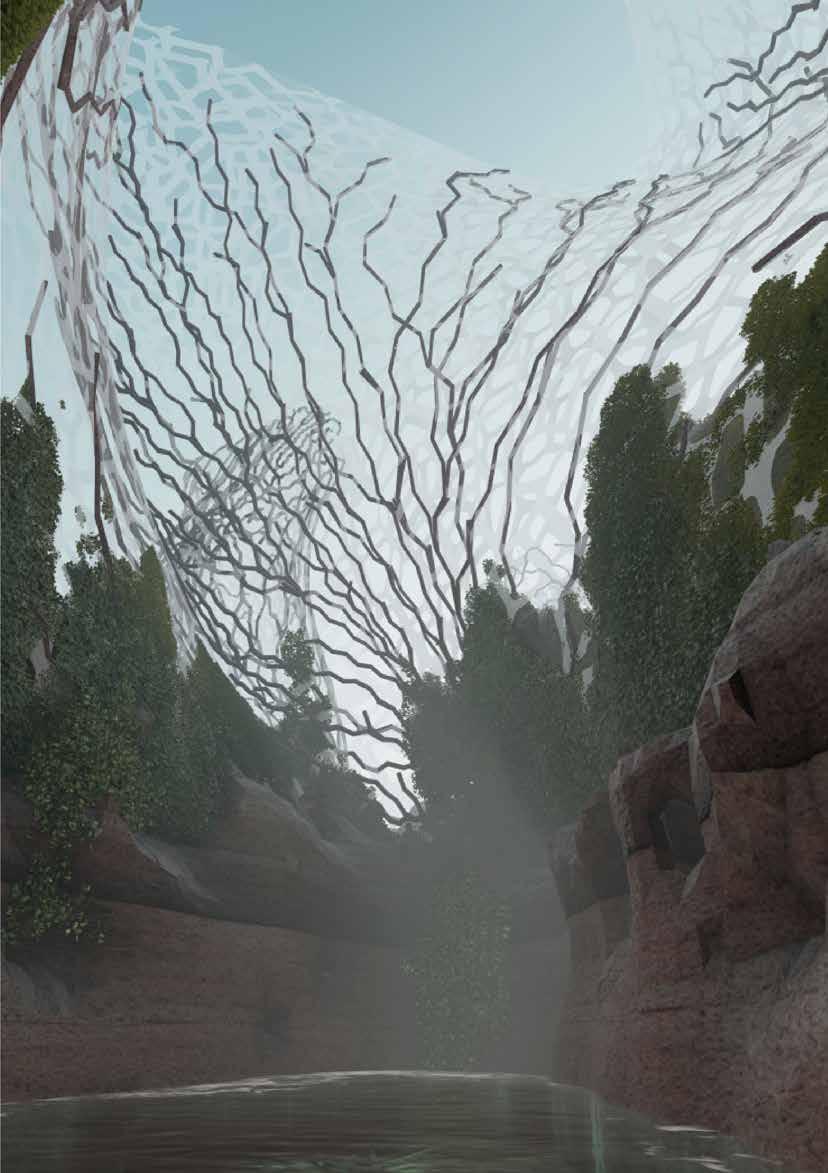
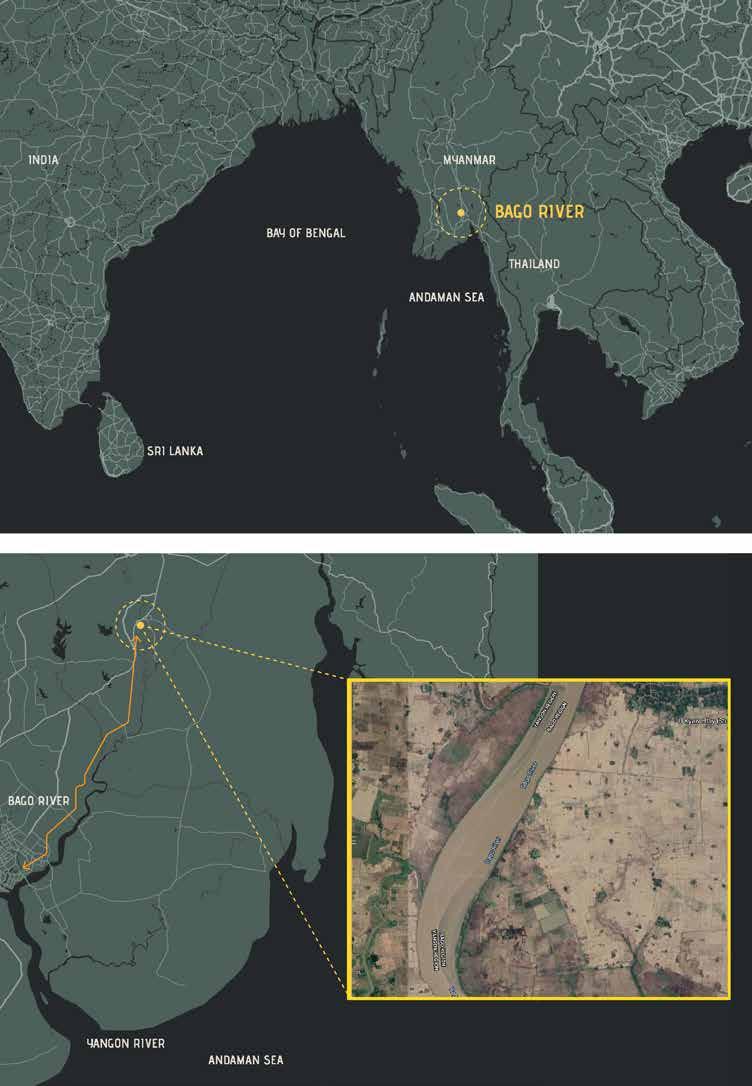
BAGO RIVER
The precipitation and river flow in the Bago River Basin have changed, resulting in floods and droughts in this watershed because of climate change impacts. In summer, many areas in the Bago River Basin are known for their scanty annual rainfall, remarkably high rates of evaporation and consequent insufficiency in renewable water resources, and reduced water storage capacity. Water yields declined at the basin outlet during the summer and winter but increased during the rainy season. In the dry period, especially in March, because there is less water in the river, the river’s flow is reduced to a velocity ranging from 6-40 cm/s. In the rainy season, a greater quantity of water in the river at the flood level of 860 cm causes the river to regain its flowing rate of 137 cm/s, and as the flood level becomes higher to the point of 900 cm, there is an increase in the flow rate, for instance to 200 cm/s.
(Journal of Earth Science & Climatic Change, Aung Ye Htut, Sangam Shrestha, Vilas Nitivattananon and Akiyuki Kawasaki)
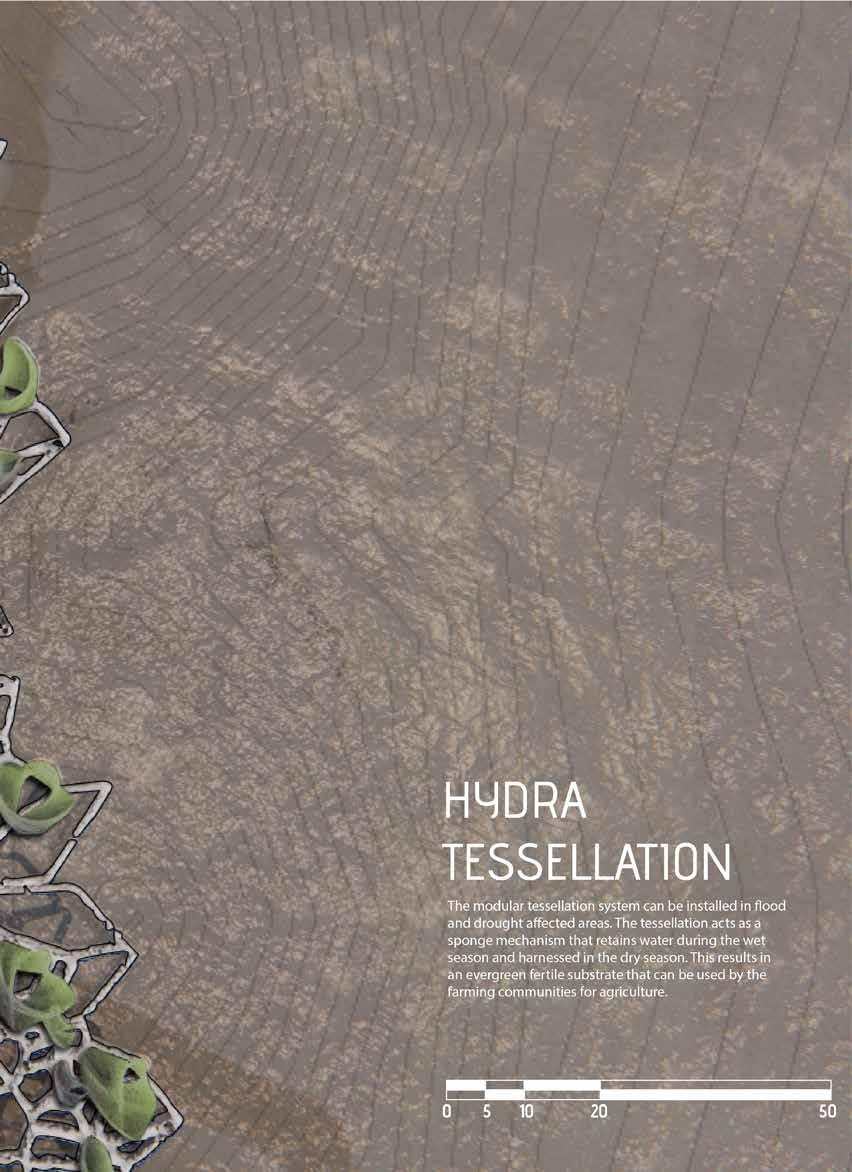

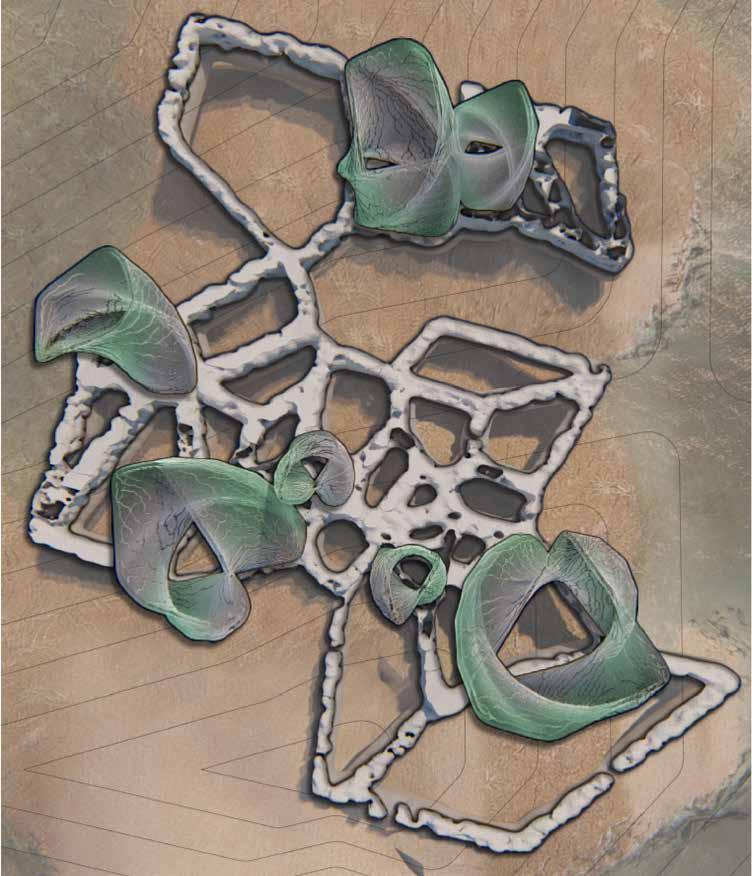
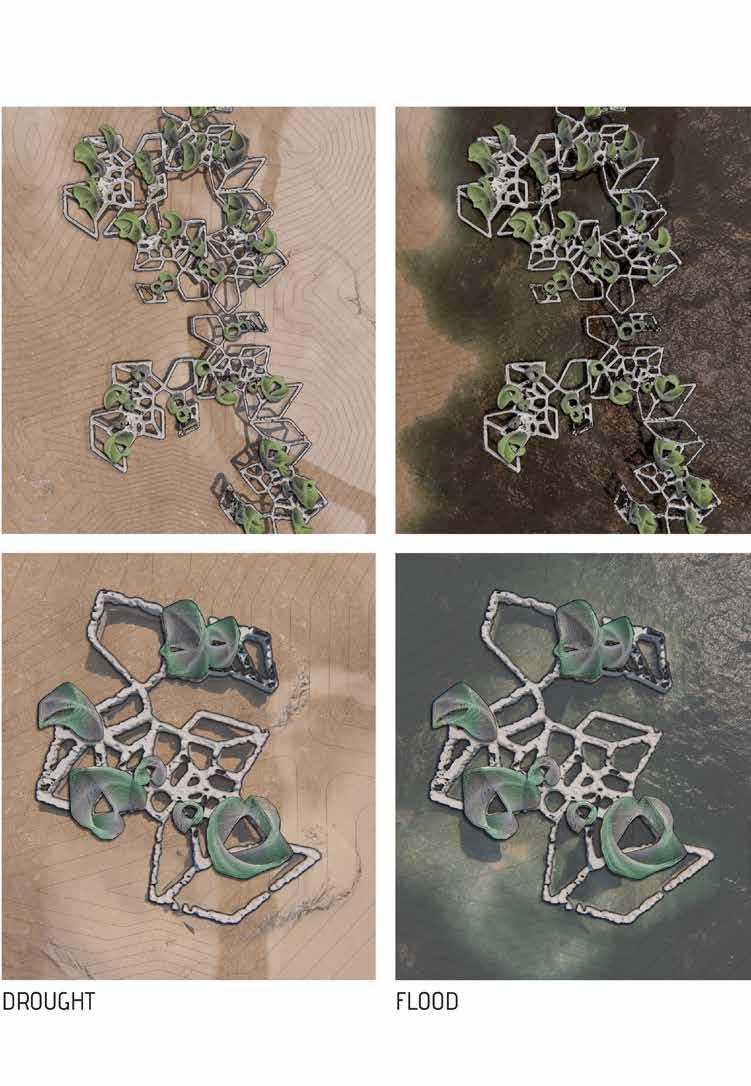
3.17
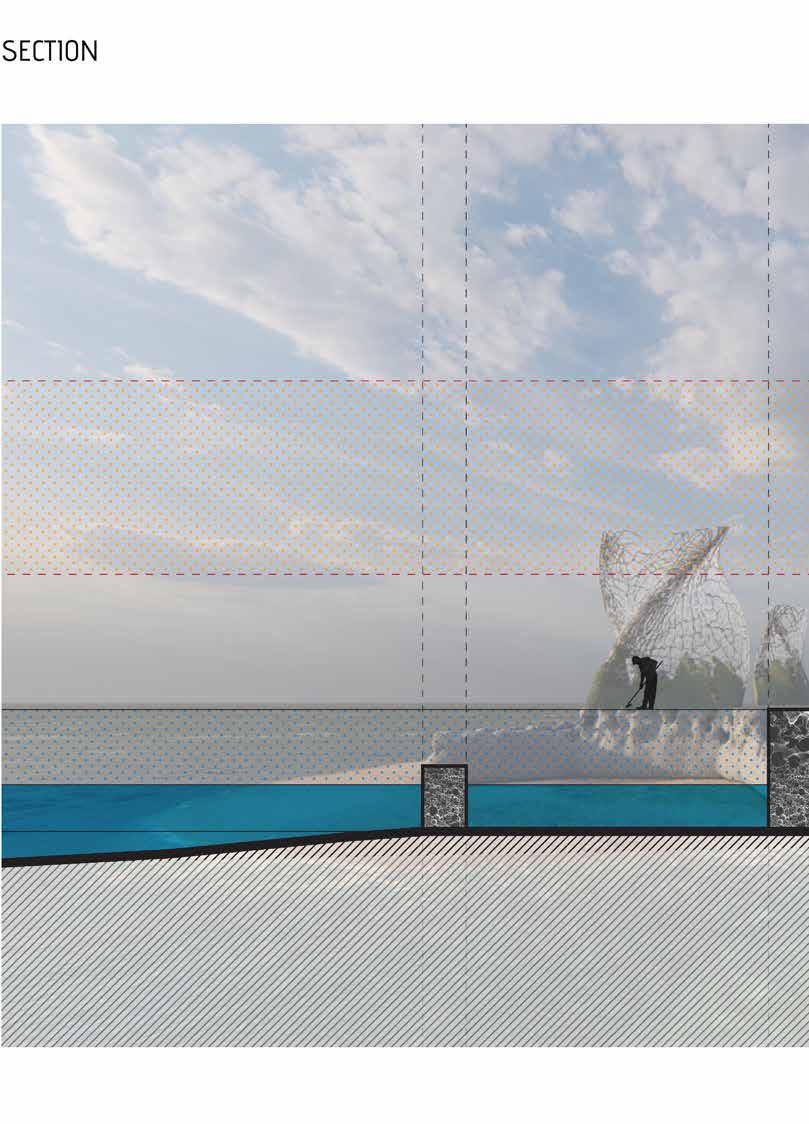
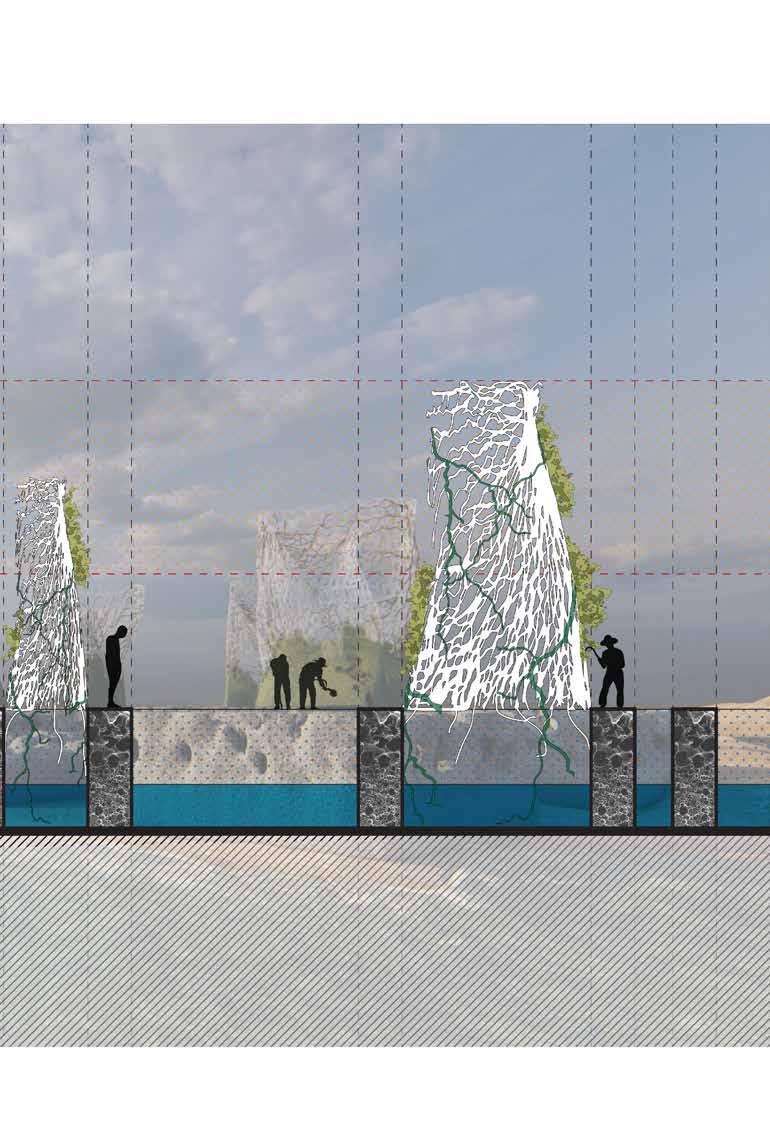




3.21
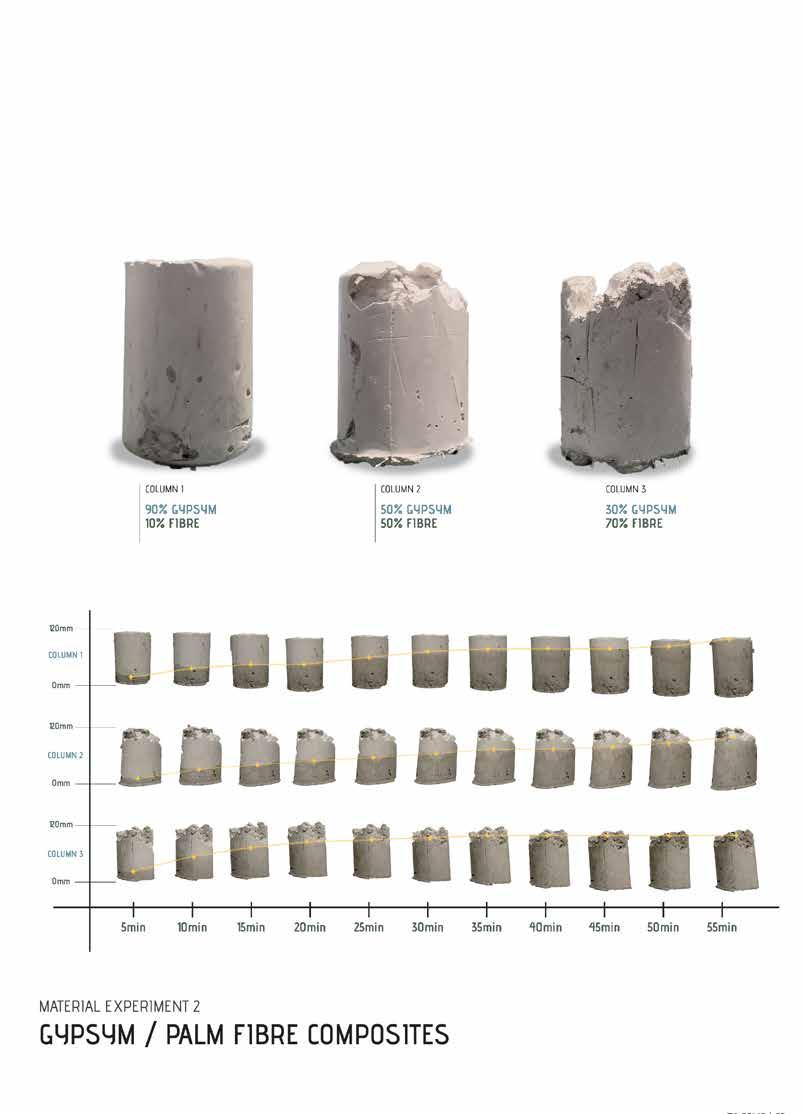
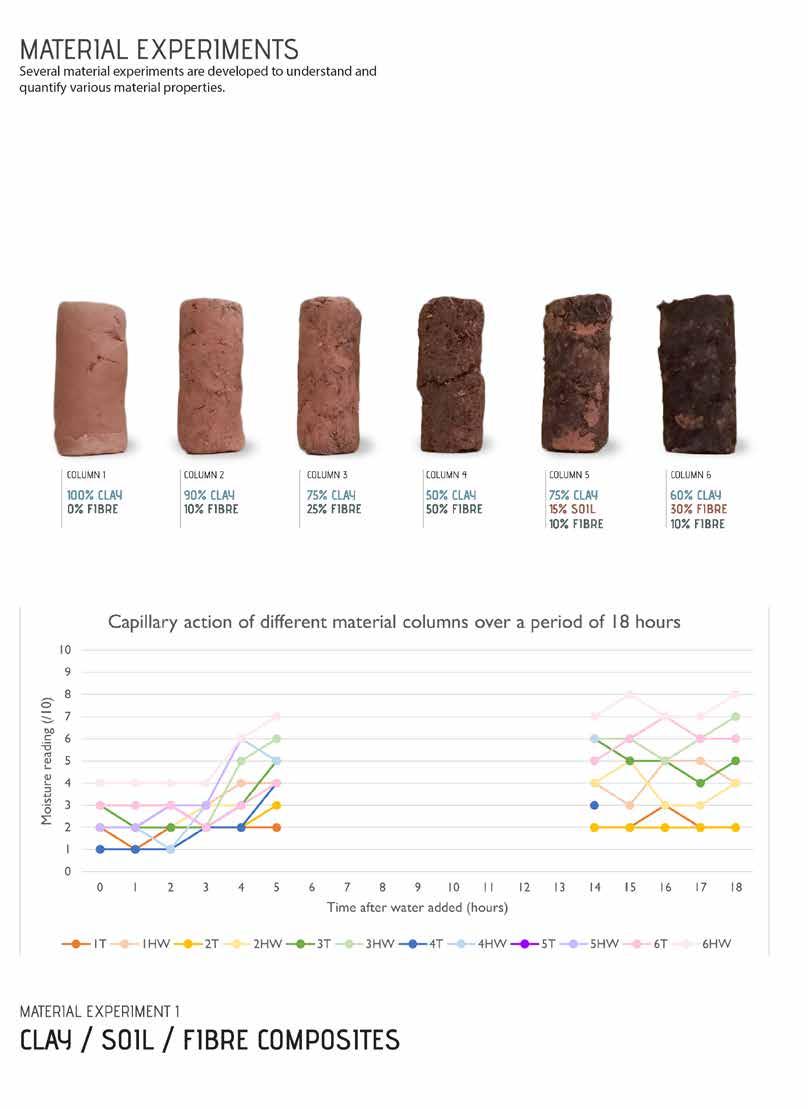
3.23 3.24
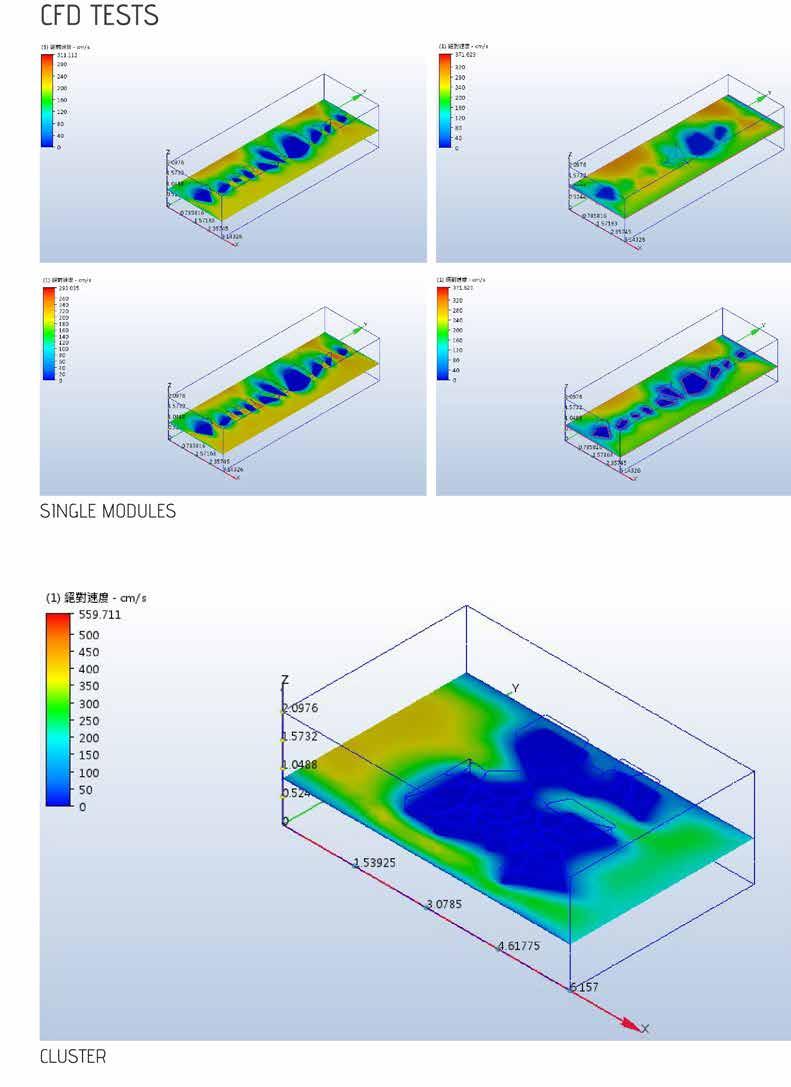
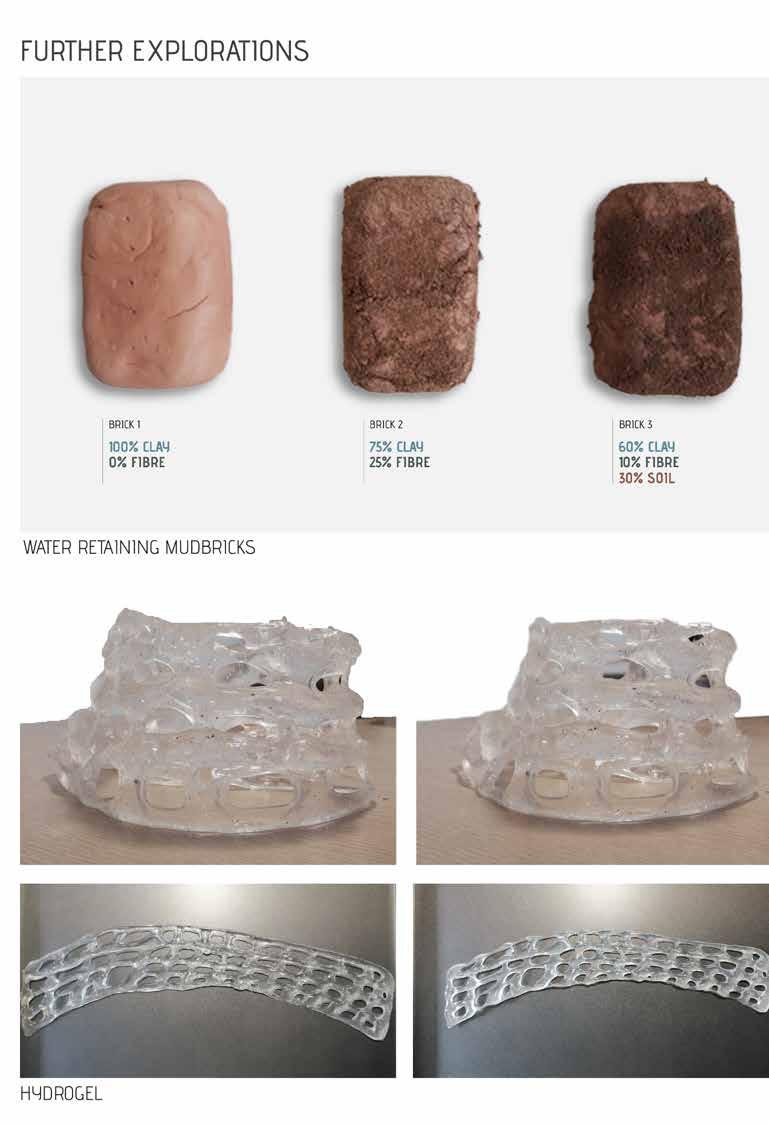
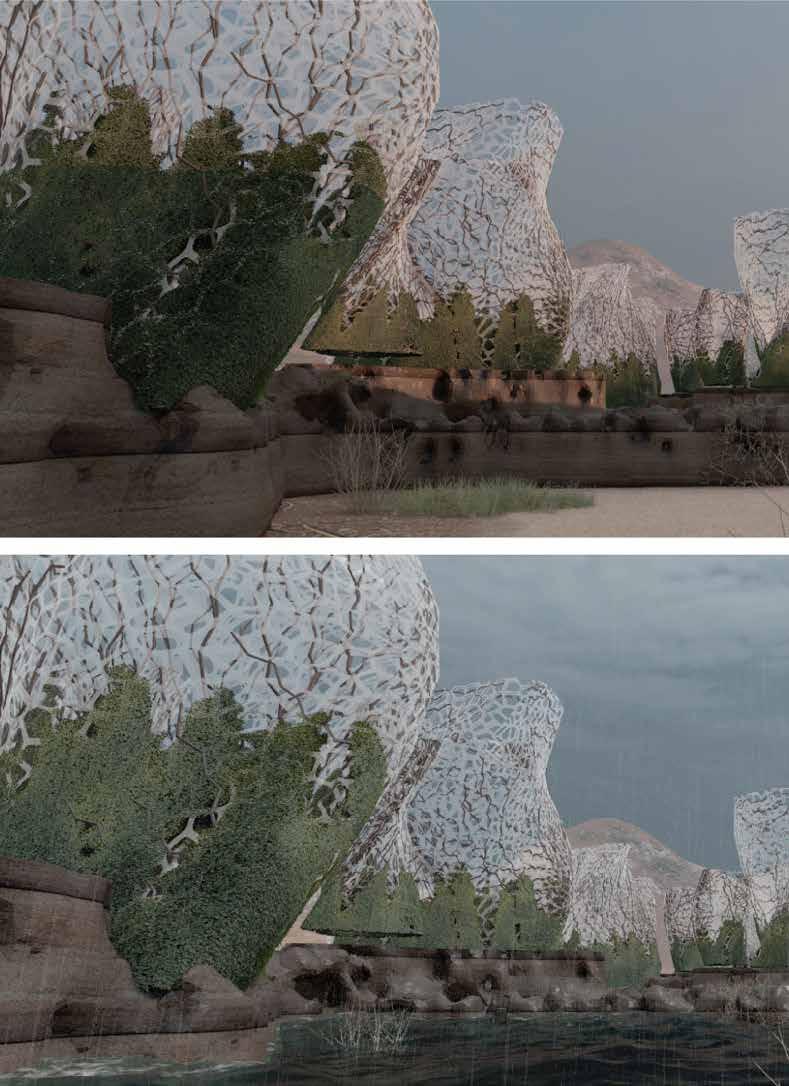
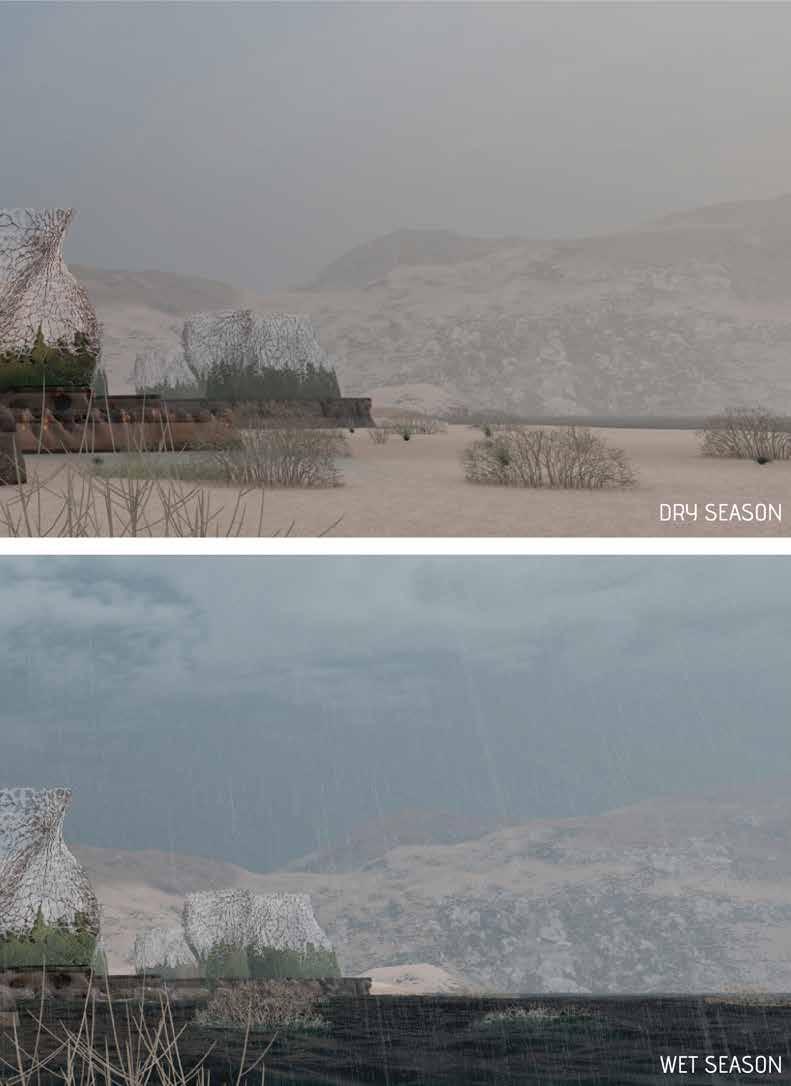
TRICHOMA
Trichoma is a Y1 project in collaboration with Lina Sarma, who led the CFD analysis and Agathe Cheve, who led the scientific research agenda. It aims to present an architectural system called ‘Trichoma’ by drawing parallels between biology and architecture. This project aims to liberate architecture from its traditional association with inert mass towards a responsive behavioural mechanism that can function on various scales. The primary aim of this project is to integrate biology with environmental data and vernacular architecture through advanced computation and fabrication techniques.





